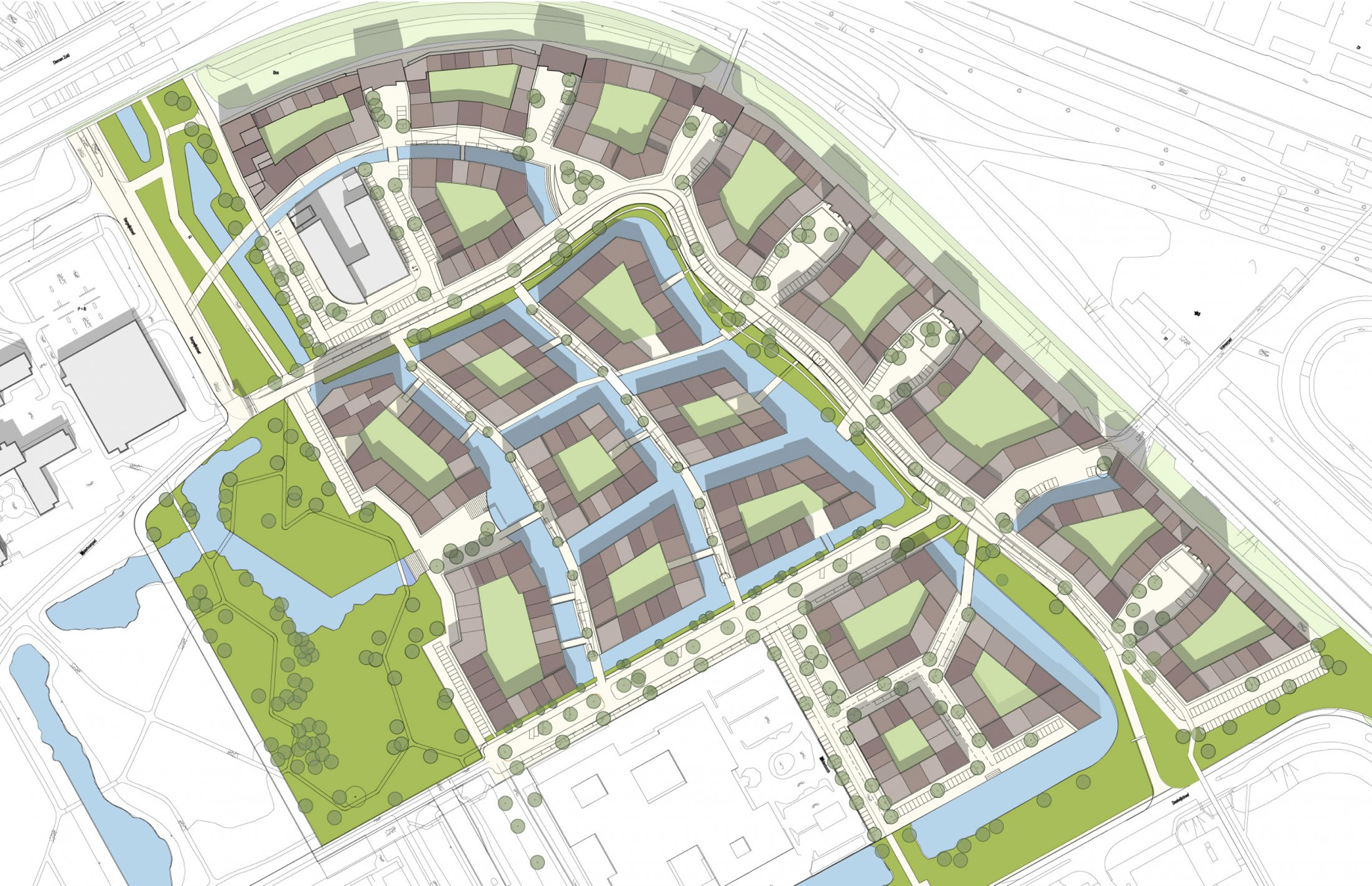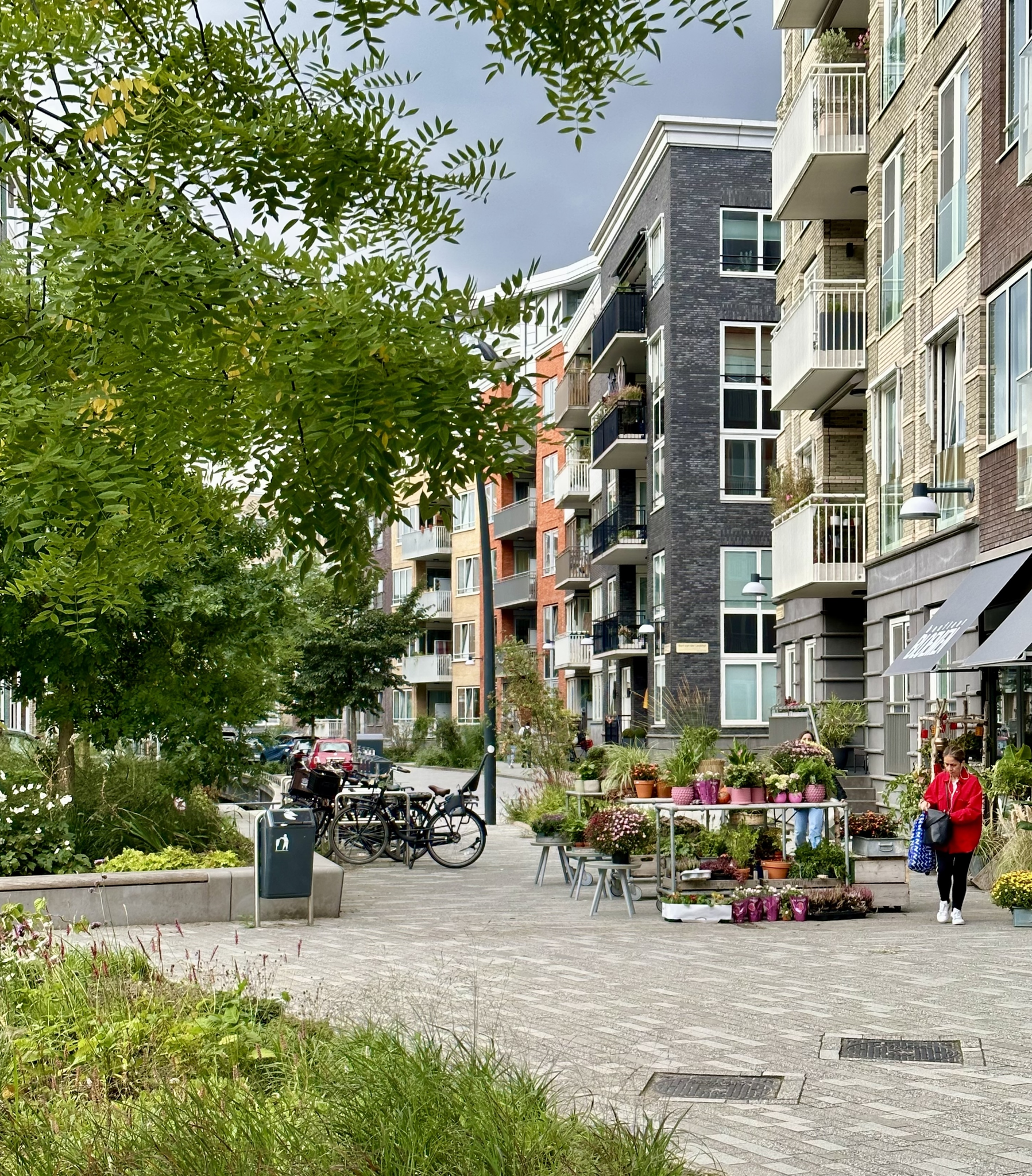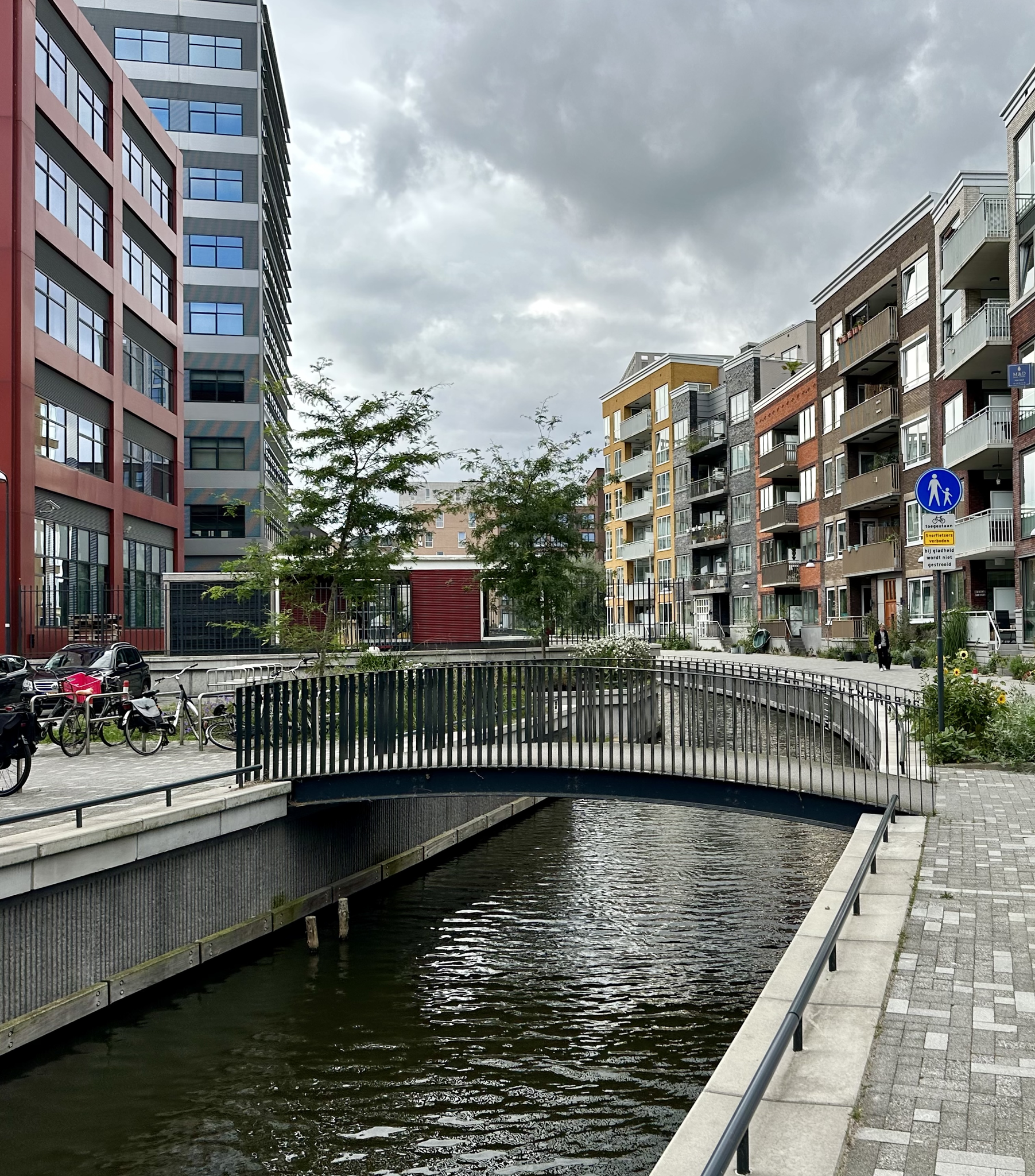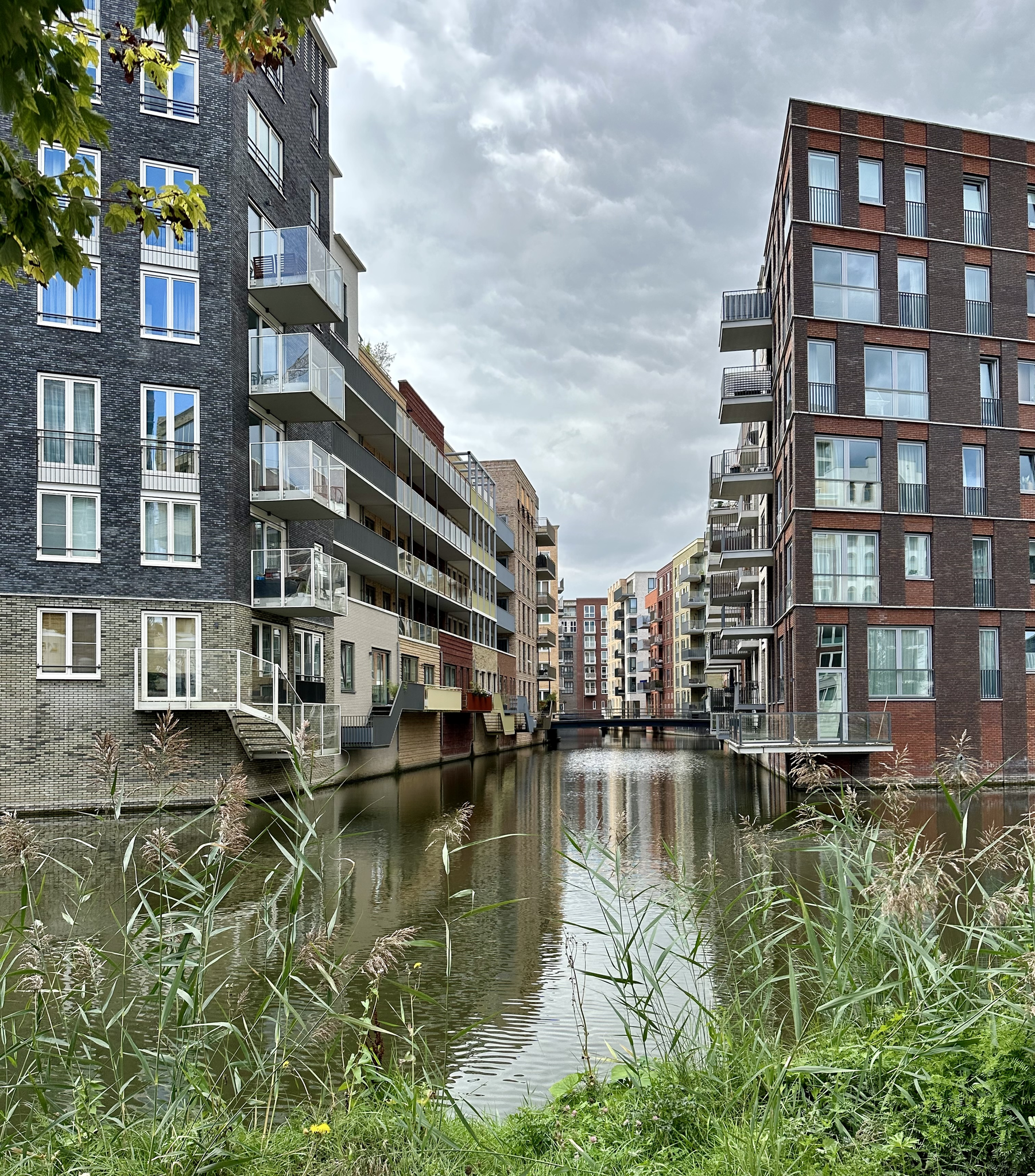Holland Park is an urban, almost car-free residential development on a former office area in Diemen, North Holland. The urban plan, designed starting from the experience of public space, was developed in 2015 by Soeters Van Eldonk architects. The site map (see figure below) is markedly different from that of most new residential areas with a similar FSI.[1] What stands out are the kinks and bends in the building lines, roads and water bodies.
Holland Park is a good example of a carefully designed urban development that brings a pleasant and varied aural experience. High-quality public space was a prominent aim in the plan. The buildings therefore serve the public space: they form the street walls and indicate the boundaries that are appropriate for the use of the space.
The public space in Holland Park is compact, clearly arranged and always different in size. Because the building lines are angled and the building blocks are not constructed in a single material, colour or style[2], moving through the public space produces a succession of varied experiences, both auditory and otherwise.
Why does Holland Park sound so good?
- The public space consists of a series of compact, small-scale and finely woven areas to dwell. This facilitates encounters and social traffic generating lots of human sounds (voices, murmurs, (children's) play, etc).
- The neighbourhood is almost car-free[3], subtle sounds are not drowned out by noise from motorised traffic.
- The kinked building lines, constantly differently detailed facades and different sizes of public spaces create a heterogeneous sound environment. Sounds reverberate differently at every spot. You walk through an alternating mix of intimate and more spacious spaces. In a relatively small area, you therefore have a choice of many different atmospheres.
- The numerous water bodies and canals add pleasant sounds that make the weather and seasons audible. This adds to the sense of place.
- Designing the space first, and only then the buildings seems illogical but here it worked fantastically. This is perhaps the main reason why Holland Park sounds so good: the experience of the space was a priority from the start.
- Designing based on sensory experience produces attractive public spaces. With curved and kinked lines, meandering footpaths, height differences and vistas, there is not only something new to see every 10, 20 metres, it also sounds different every time, unlike neighbourhoods with straight linear façades and long street lengths.
- Our orientation benefits from heterogeneity. The fact that it sounds slightly different in all places not only provides a pleasant experience of the space, but also makes that people can orient themselves well here. People with visual impairments in particular will be happy with that.
- Designing floor and façade walls in coherence as was done here should be standing practice; it makes the aural quality of the space easier to design and reduces the chance of unpleasant surprises afterwards. Example: A beautifully designed ground level with lots of greenery and opportunity to stay sandwiched between two austere glass facades does not deliver (aural) quality of stay and will not be used much, if at all.
- When drawing up an urban development plan, design decisions are taken that have a fundamental impact on the sound environment. That impact is most often not fully anticipated by urban planners, resulting in sub-optimal or at least unplanned outcome. It is recommended to introduce and apply knowledge about good outdoor sound design as early as the drafting of the urban development plan. This will have a major positive impact on the final outcome. <internal reference to noise and planning>
Design strategies
What design strategies have been successfully applied here:
- Curving or bending the building line
- Keep public space small
- Add water
- Reduce car traffic
See also
Interview Sjoerd Soeters (internal reference)
[1] FSI = Floor Space Index. The FSI is the ratio between the total gross floor area (GFA) of the buildings and the corresponding site surface area.
[2] The facades of the building blocks are cut up into vertical facade surfaces with a constantly different spatial composition.
[3] The neighbourhood is a 30 km zone, residents park in garages, the ‘shared space’ principle is applied.



